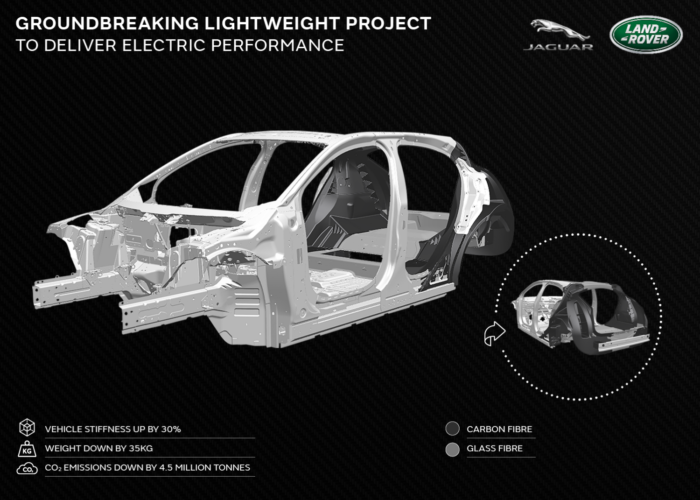Studies by the Ford Motor Company have shown that as much as 70 per cent of the lifecycle costs of a product become locked in during its conceptual design.
A detailed understanding of the product as early as possible in the design stage is, therefore, time well spent and critical in managing through-life expenditure, improving quality and product performance by effectively minimising risk.
Digital simulation and modelling of new products provides manufacturers with far deeper insight into the way in which a design will operate in real life, without the major financial and time investments in physical prototypes and test programmes.

As technology has evolved over recent years, adoption of digital design solutions by industries from aerospace and automotive to energy and infrastructure has increased dramatically. For example, in the development of the next generation US military trainer aircraft, digital modelling and simulation has been established at the core of the programme, leading to savings of up to 30 per cent and a 75 per cent increase in first-time quality, according to industry reports. What’s more, the aircraft was developed in just three years, compared to a previous ten-year timeline.
Guest blog: why digitalisation is vital for future prosperity
Using driver in the loop simulation to guide electric vehicle development
While certification bodies rightly demand evidence through physical testing, the scale of these benefits suggests that an increased use of digital technology can help minimise this if the industry can overcome barriers of trust, confidence and cost.
Managing multiple objectives
One area where confidence in modelling and simulation is growing is in its ability to manage and balance the competing needs of the many stakeholders involved in the development of a new product.
Typically, it is unlikely that the objectives of these stakeholders will seamlessly align. More often than not, they don’t. How do you make a car cheaper while maintaining the highest safety standards? Or how can an aircraft carry more load while reducing emissions?
Making the best design decision requires multi-objective optimisation, where each element may compete with others meaning a perfect optimum may not be achieved for each requirement. Instead, a series of optima may be the outcome.
To realise the benefit of this approach, design needs to be model-based, where the requirements and function of each element or system within the product are represented in a simple mathematical form and then put together in a manner that builds a ‘system of systems’, i.e. the product.
The role of the engineer is to analyse the results and understand which combination of systems can achieve the best overall outcome. This helps to remove the danger of the solution being predetermined by the experience of an individual and it eliminates the, sometimes, subjective nature of stakeholder requirements.
By automating this process and using a high-performance computer to explore every path or option, the engineer is rapidly provided with a far richer landscape of knowledge, with quantitative rather than qualitative assessments, thereby presenting more robust evidence for a design decision.
This multi-objective process uses technology to raise awareness of what is possible at an early stage, illustrating how to refine the definition of a product before committing large scale resources into detailed design. Such advances are vital in overcoming the financial barriers of new product development where there is limited tangible experience.
Simulation hurdles
While the long-term cost and time savings of simulation are clear, the reality is that accurate simulation is not cheap. Access to computational facilities and specialist software licences can be exceedingly expensive with many smaller companies simply unable to afford them.
However, things are changing.

The advent of cloud computing means that, theoretically, SMEs can now access the high-end computational platforms needed for modelling-as-a-service, removing the need for long term investment. In terms of software, open-source tools are now emerging that can eliminate licencing costs but their efficacy within industry and the regulatory community is less accepted.
Companies investing in software need to be confident that what they are buying is not only cost-effective but also fit for purpose especially as we move to operational extremes. Improving the level of collaboration and sharing of knowledge between sectors will be vital to help ensure simulation tools keep pace with the products demanded by society.
The rise of multi-physics optimisation
This all helps build further trust in the value of simulation and confidence in the strength of its results in the real world. Recently, this has been supported by an emerging field of investigation in the use of multi-physics optimisation, where engineers look beyond the normal software silos of fluid dynamics, heat transfer and structural analysis tools which dominate current practice.
Historically, most models used in engineering design are developed and refined by domain experts to the required accuracy and then stitched together with those from other disciplines to form a ‘toolchain’ for the product. This assumes that each aspect of the problem has a degree of independence from the next. But this is not the case in the real world where objects are subject to all the laws of physics, simultaneously.
The standard toolchain approach also creates problems of interoperability between tools and can lead to uncertainty as different elements of a toolchain may be more mature than others for a particular application. Consequently, certain aspects of a toolchain may be trusted and other elements not, impairing confidence in the overall outcome. Multi-physics tools can overcome these issues as they represent the tightly coupled nature of changes to a system and eliminate problems with data translation between different tools.
This is particularly true in the case of new materials or processes where there is little inherent knowledge to rely on. However, no matter the topic, the laws of physics do not change so, by working with basic principles and lower fidelity models, one can apply these simultaneously at an unprecedented scale.
The process provides the information needed by the engineers and regulators to identify where the areas of risk may lie, where information should be captured or how to improve the design. The earlier in the design process that this is done the better chance one has of capturing problems when they are cheap to resolve, meaning the invested effort in system design is not wasted.
Multi-physics modelling has been particularly transformative for the Tucana project, Jaguar Land Rover’s ground-breaking initiative to enable future electric vehicles to be lighter, faster and go further by using advanced composites.
The project has involved process modelling for producing sheet moulding compound components, a composite material suited to high volume manufacturing. Modelling them is, however, challenging. Not least because the accuracy of available software is not good enough, leaving extensive physical trials as the only option to understand the effects of variations in mould design and processing parameters.

However, our team is currently working with the Tucana project to investigate an alternative multi-physics modelling approach which may well provide the level of accuracy needed. The approach also speeds up the time of the simulation significantly, taking hours rather than weeks. Potentially, this is a game-changer for the industry. The simulation also yields a massive dataset that can be analysed using artificial intelligence systems to provide yet more insight.
By investigating this topic, the project partners will gain a view of whether this approach, based on open-source software, will be viable for the industry in the near to mid-term. It could lead to a halving of the cost of process development trials, which would be hugely significant if composites are to be implemented in the automotive sector at scale.
This is just one aspect of one project within one industry where the early-stage use of innovative and advanced modelling and simulation has the potential to have a major impact on the traditional design process.
If one could remove the need for physical prototyping by having more confidence in the simulation tools available, then the impact across all industries would be dramatic. If such cost savings can be replicated on every development in every product, the gain in efficiency and productivity is palpably clear.
Ian Risk is Chief Technology Officer at CFMS, responsible for evolving the company's technical vision and leading all aspects of technology development according to its strategic direction and growth objectives. Ian was previously Head of Airbus Group Innovations UK where he was responsible for the UK corporate research capability, developing technical strategy, business development and initiating industrial and academic partnerships.




Red Bull makes hydrogen fuel cell play with AVL
Formula 1 is an anachronistic anomaly where its only cutting edge is in engine development. The rules prohibit any real innovation and there would be...